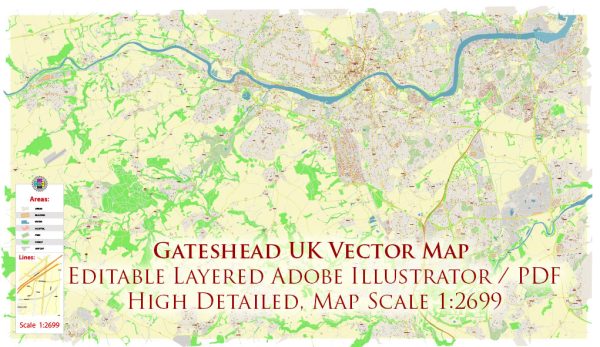Gateshead is a town located in the northeastern part of England, in the United Kingdom. It has a rich history that dates back centuries and has undergone significant changes and developments over the years. Here is a brief description of the history of Gateshead:
- Early History: The area that is now Gateshead has a history that can be traced back to Roman times, with evidence of Roman settlements and roads in the region. However, it was during the medieval period that Gateshead began to take shape as a recognizable settlement.
- Norman Conquest: After the Norman Conquest of England in 1066, William the Conqueror’s forces established a wooden castle in Gateshead, marking the beginning of its significance in regional defense.
- Trade and Industry: In the late Middle Ages and into the early modern period, Gateshead became known for its coal mining, ironworks, and shipbuilding. The town’s location on the River Tyne made it a key player in the industrial revolution of the 18th and 19th centuries, with the development of shipyards and coal exports.
- Transportation: The Industrial Revolution also led to the construction of railways and bridges connecting Gateshead to nearby Newcastle, making it an important transportation hub for goods and people.
- Growth and Urbanization: The growth of industry and population led to the urbanization of Gateshead. It expanded as a center for manufacturing and trade, and the town’s skyline began to change with the construction of various mills, factories, and warehouses.
- Cultural and Architectural Development: In the late 19th and early 20th centuries, Gateshead saw the development of cultural institutions such as the Shipley Art Gallery and the Saltwell Towers, a Victorian mansion that is now a museum. The town’s architecture also reflects the various historical influences and periods.
- Decline and Regeneration: Like many industrial towns, Gateshead faced economic decline in the mid-20th century due to the decline of traditional industries. However, in more recent years, it has experienced regeneration efforts, with the construction of notable landmarks like the Gateshead Millennium Bridge and the Sage Gateshead, a world-class music venue.
- Modern Times: Today, Gateshead is a part of the metropolitan county of Tyne and Wear. It is closely linked to its neighbor, Newcastle, and is known for its cultural attractions, including the Baltic Centre for Contemporary Art, the Angel of the North sculpture, and the Quayside area, which has been revitalized as a hub for dining, entertainment, and leisure activities.
Gateshead’s history is one of transformation, from its early days as a small medieval town to its role in the Industrial Revolution and its more recent revitalization as a cultural and economic center in the North East of England.


 Author: Kirill Shrayber, Ph.D.
Author: Kirill Shrayber, Ph.D.